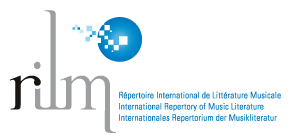El vals en la música criolla y en el tango.
Palabras clave:
vals, criollo, vals criollo, tango, ArgentinaResumen
En este trabajo me ocupo del vals criollo, género que, desde comienzos del siglo xix, se difundió por casi toda América y adoptó características musicales distintivas tomadas del contacto con las músicas de las diversas regiones geográficas y culturales en donde ingresó. En Argentina, se incorporó al repertorio de los intérpretes de tango y de los llamados músicos criollos que, a principios del siglo xx, interpretaban zambas, chacareras, estilos, bailecitos, tonadas y valses criollos con acompañamiento de guitarras. Para la caracterización de los modelos de valses más recurrentes, he tomado como marco teórico estudios sobre el género que provienen de la musicología cognitiva (prototipos) y en función de dicha teoría he analizado tres obras que considero prototípicas durante los primeros treinta años del siglo xx, es decir la época en la que se podría hablar de un protocampo musical en el que confluyen compositores e intérpretes tanto del tango como de la música criolla. Los músicos de las siguientes generaciones privilegiaron uno u otro modelo y fueron reforzando aquellos rasgos que permitieron diferenciar los campos en cuestión y separar al tango del folclore.
Descargas
Publicado
Número
Sección
Licencia
Derechos de autor 2018 Silvina Argüello

Esta obra está bajo una licencia internacional Creative Commons Atribución-NoComercial 4.0.
ATRIBUCIÓN-NOCOMERCIAL 4.0 INTERNACIONAL
https://creativecommons.org/licenses/by-nc/4.0/
Usted es libre de:
- Compartir — copiar y redistribuir el material en cualquier medio o formato
- Adaptar — remezclar, transformar y construir a partir del material
- La licenciante no puede revocar estas libertades en tanto usted siga los términos de la licencia
Bajo los siguientes términos:
- Atribución — Usted debe dar crédito de manera adecuada , brindar un enlace a la licencia, e indicar si se han realizado cambios . Puede hacerlo en cualquier forma razonable, pero no de forma tal que sugiera que usted o su uso tienen el apoyo de la licenciante.
- No Comercial — Usted no puede hacer uso del material con propósitos comerciales .
- No hay restricciones adicionales — No puede aplicar términos legales ni medidas tecnológicas que restrinjan legalmente a otras a hacer cualquier uso permitido por la licencia.
Avisos:
No tiene que cumplir con la licencia para elementos del material en el dominio público o cuando su uso esté permitido por una excepción o limitación aplicable.
No se dan garantías. La licencia podría no darle todos los permisos que necesita para el uso que tenga previsto. Por ejemplo, otros derechos como publicidad, privacidad, o derechos morales pueden limitar la forma en que utilice el material.







